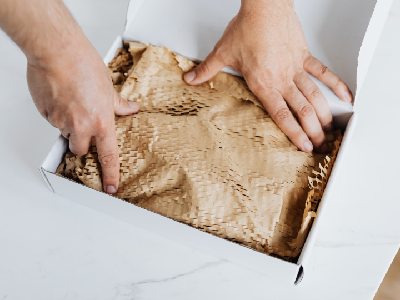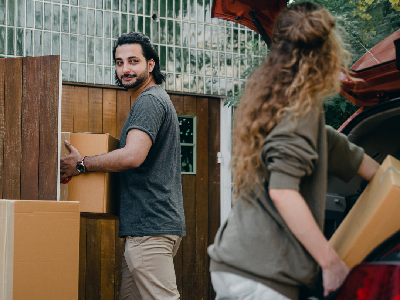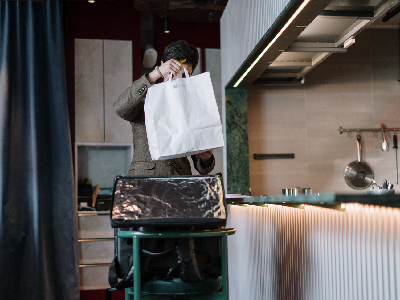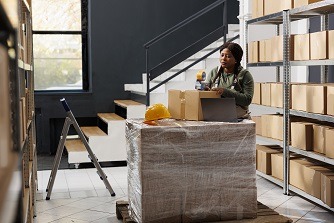I. Introduction to the Packing Tips for Move
Moving to a new home can be exciting, but packing and unpacking presents its own set of challenges. From sorting through belongings to safely transporting fragile items, there’s a lot to consider. In this guide, we’ll explore practical packing tips for your move and make the transition smoother. Whether you’re a first-time mover or a seasoned pro, this comprehensive resource aims to provide valuable insights and strategies to simplify the packing process and ensure a successful move to your new abode.
II. Gather Packing Supplies
Packing supplies are essential for a successful move, but they don’t have to break the bank. Here are some tips to help you gather the necessary materials without spending a fortune:
A. Obtain Free or Inexpensive Packing Materials:

1. Ask Friends and Family
Reach out to friends, family, and coworkers who have recently moved and see if they have any leftover packing materials they’re willing to part with.
2. Visit Local Businesses
Many local businesses, such as grocery stores, bookstores, and pharmacies, receive regular shipments and may have excess boxes they’re happy to give away for free.
3. Check Online Platforms
Websites like Craigslist, Facebook Marketplace, and Freecycle often have listings for free moving boxes and packing supplies. Watch for postings in your neighbourhood.
3. U-Haul Customer Connect
Utilize U-Haul’s Customer Connect program, which connects people who need moving supplies with those who have them to give away or sell at a low cost.
4. Reuse Packaging Materials
Save and reuse packaging materials from online deliveries, such as bubble wrap, packing paper, and air pillows, to cushion fragile items during your move.
5. Free Moving Boxes
Go with the guide to get free moving boxes for your move.
B. Utilize Household Items Creatively in the Packing Process:

1. Utilise Blankets and Towels
Use blankets, towels, and linens to wrap fragile items and provide extra padding inside boxes. This not only protects your belongings but also reduces the need for additional packing materials.
2. Repurpose Storage Containers
Utilise items like laundry baskets, hampers, and suitcases to transport clothing, linens, and other lightweight items. This not only saves space in moving boxes but also makes it easier to transport these items.
3. Maximise Suitcase Space
Fill suitcases with clothing, shoes, and other items, utilizing every inch of space efficiently. This helps reduce the number of boxes needed and makes it easier to transport your belongings.
By utilising these tips, you can gather the necessary packing supplies without overspending and make the packing process more efficient and cost-effective.
III. Hazardous and Perishable Items
When preparing for a move, it’s essential to understand how to handle hazardous and perishable items safely. Here are some guidelines to help you navigate this aspect of the packing process:
A. Handle Items That Moving Companies rarely transport:

1. Flammable Liquids and Aerosol Cans
Most moving companies refuse to transport items classified as hazardous materials, including flammable liquids like gasoline, propane tanks, and aerosol cans containing compressed gases. These items pose a risk of combustion or explosion during transit.
2. Perishable Foods
Moving companies also rarely transport perishable foods, such as fresh produce, dairy products, and frozen items. These items can spoil during transit, leading to unpleasant odours, leaks, and potential health hazards.
3. Plants and Pets
Some moving companies have restrictions on transporting live plants and pets because of regulations and potential liability issues. It’s essential to check with your moving company regarding their policies on transporting plants and pets and make alternative arrangements if necessary.
B. Dispose or Transport Hazardous and Perishable Items Safely:

1. Dispose Hazardous Materials Properly
Safely dispose of any hazardous materials that your moving company can not transport. Contact your local waste management facility or recycling centre for guidance on how to dispose of these items safely and responsibly.
2. Use or Donate Perishable Items
Consume or donate perishable food items before your move to avoid waste. Consider hosting a farewell dinner or donating excess food to friends, family, or local food banks. Alternatively, you can use a cooler with ice packs to transport perishable items short distances.
3. Make Alternative Arrangements for Plants and Pets
If your moving company does not transport live plants or pets, make alternative arrangements for their transport. Consider hiring a specialised pet relocation service for your furry friends or transporting plants in your personal vehicle.
IV. Purging and Packing of Storage Areas
Before embarking on your move, it’s crucial to declutter and pack items stored in basements, attics, and garages efficiently. Here’s how to tackle this aspect of the packing process:
A. Declutter and Pack Items Stored in Basements, Attics, and Garages:

1. Start Early
Begin decluttering and packing these storage areas well before your move. These spaces often contain a significant amount of items accumulated over time, so giving yourself ample time to sort through them is essential.
2. Sort Items
Divide items into categories such as keep, donate, sell, and discard. Make painful decisions and only hold on to things that are absolutely necessary or have special meaning for you.
3. Dispose of Unwanted Items:
Properly dispose of items that are no longer needed or in usable condition. Consider recycling, donating to charity, or hosting a garage sale to get rid of unwanted items responsibly.
4. Use Space-Saving Techniques
Utilize space-saving techniques such as vacuum-sealed bags for clothing and bedding, stackable storage bins for smaller items, and shelving units to maximize vertical space.
5. Label Boxes Clearly
As you pack, label boxes with the contents and destination room to make unpacking easier. When you get to your new house, this will help you find items fast.
B. Importance of Minimizing the Number of Items Packed to Reduce Moving Costs:

1. Weight-Based Moving Costs
Many moving companies charge based on the weight of your belongings or the amount of space they occupy in the moving truck. By purging and packing only essential items, you can reduce the overall weight and volume of your shipment, potentially saving money on moving costs.
2. Streamline the Packing Process
Packing fewer items means less time and effort spent on packing, loading, and unloading. This can help streamline the moving process and reduce stress for you and your movers.
3. Create a Fresh Start
Moving presents an opportunity to start fresh in your new home. By decluttering and purging unnecessary items before your move, you can create a more organized and clutter-free living space in your new home.
V. Packing the Kitchen Early
Packing the kitchen early in the moving process is essential for a smooth transition to your new home. Here’s why it’s crucial and some tips for packing kitchen items efficiently and safely:
A. Reasons for Prioritising the Packing of the Kitchen:

1. Complexity of Items
The kitchen often contains numerous fragile and oddly shaped items such as glassware, dishes, and small appliances. Packing these items requires careful planning and organization.
2. Time-Consuming Process
Packing the kitchen can be a time-consuming task because of the number of items and the need for careful wrapping and packing. Starting early allows you to spread out the packing process over several days or weeks, reducing stress and ensuring thoroughness.
3. Daily Use
While other rooms in the house may contain items that are used less frequently, the kitchen typically contains items that are used daily. Packing the kitchen early ensures that you have access to essential items until moving day.
B. Tips for Packing Kitchen Items Efficiently and Safely:

1. Use Sturdy Boxes
Choose sturdy boxes in various sizes for packing different types of kitchen items. Reinforce the bottom of boxes with extra packing tape to prevent them from breaking under the weight of heavy items.
2. Wrap Fragile Items
Wrap fragile items such as dishes, glassware, and ceramics in packing paper or bubble wrap to prevent breakage during transit. Use additional padding, such as towels or dishcloths, to cushion items inside boxes.
3. Pack Similar Items Together
Group similar items together when packing to make unpacking easier. For example, pack all plates together, all glasses together, and all utensils together. Clearly label boxes with the contents and destination room for easy identification.
4. Empty and Defrost Appliances
Empty and clean appliances such as refrigerators, freezers, and microwaves before packing them. Defrost and dry appliances that contain ice or liquids to prevent leaks during transit.
5. Secure Small Appliances
Pack small appliances such as blenders, toasters, and coffeemakers in their original boxes if possible. If not, wrap them in packing paper and place them in sturdy boxes with plenty of cushioning.
6. Pack Non-Perishable Food Items
Pack non-perishable food items such as canned goods, spices, and pantry staples in sturdy boxes. Consider donating any unopened and non-expired food items to reduce the amount of food you need to pack and transport.
VI. Set Aside Valuables and Essentials
As you prepare for your move, it’s crucial to set aside valuables and essential items to ensure easy access and convenience during the transition. Here’s how to identify these items and pack them strategically:
A. Identify Essential Items to Keep them Separated for Easy Access During the Move:
1. Important Documents
Gather important documents such as passports, birth certificates, financial records, and medical records and keep them in a secure and easily accessible location. Consider storing them in a designated folder or small box labelled “Important Documents.”
2. Medications and First Aid Kit
Set aside any medications you and your family members may need during the move, as well as a basic first aid kit containing bandages, antiseptic wipes, pain relievers, and other essential medical supplies.
3. Toiletries
Pack a small bag or toiletry kit containing essential toiletries such as toothpaste, toothbrushes, soap, shampoo, conditioner, and toilet paper. Having these items readily available will ensure you can freshen up after a long day of moving.
4. Basic Cleaning Supplies
Keep a few basic cleaning supplies on hand, such as multi-purpose cleaner, paper towels, and trash bags, to tidy up your new home upon arrival. This will help you start off on the right foot in a clean and organised environment.
5. Snacks and Water
Pack some snacks and bottled water to keep you and your family energised and hydrated during the move. Moving can be physically demanding, so having refreshments on hand can help keep everyone fueled and focused.
B. Pack an "Open-First Box" Containing Immediate Necessities for the New Home:
1. Bedding
Pack bedding essentials such as sheets, blankets, and pillows in a clearly labelled box or bag. After a long day of moving, having a comfortable bed to sleep in will make all the difference.
2. Basic Kitchen Supplies
Include essential kitchen items such as plates, cups, utensils, a few pots and pans, and a can opener in your open-first box. This will allow you to prepare simple meals and beverages without unpacking all of your kitchen boxes right away.
3. Basic Furniture
If possible, include a few pieces of basic furniture in your open-first box, such as a table and chairs or a small sofa. Having somewhere to sit and eat or relax upon arrival will make your new space feel more comfortable and inviting.
4. Electronics and Chargers
Don’t forget to pack essential electronics such as laptops, phones, chargers, and power strips in your open-first box. This will allow you to stay connected and powered up throughout the moving process.
5. Personal Care Items
Lastly, include personal care items such as a change of clothes, pajamas, and toiletries in your open-first box. This will ensure that you have everything you need to freshen up and unwind after a long day of moving.
VII. Inventory and Labelling
Maintaining a detailed inventory and properly labelling boxes are essential steps in ensuring a smooth and organised move. Here’s why it’s important and some strategies to help you do it effectively:
A. Importance of Maintaining a Detailed Inventory of Packed Items:
1. Tracking Belongings
Keeping a detailed inventory of packed items allows you to keep track of everything you’re moving. This helps ensure that nothing gets lost or left behind during the transition.
2. Insurance Purposes
In the unfortunate event that items are lost or damaged during the move, having an inventory can help facilitate the insurance claims process. You’ll have documentation to support your claim and demonstrate the value of the items affected.
3. Organisation
An inventory provides a structured way to organise your belongings, making it easier to plan the packing process and prioritise unpacking at your new home.
4. Accountability
Having an inventory encourages accountability throughout the moving process. You can easily identify which items have been packed, loaded onto the moving truck, and unloaded at your new home.
B. Label Boxes to Facilitate Organization and Unpacking:
1. Room-Based Labelling
Assign each box a label indicating the room it belongs to in your new home (e.g., “Kitchen,” “Master Bedroom”). This helps movers know where to place boxes and makes it easier for you to direct them during the unloading process.
2. Content Description
besides room labels, include a brief description of the contents of each box (e.g., “Kitchen – Pots and Pans”). This allows you to quickly locate specific items when unpacking without having to open every box.
3. Color-Coding System
Consider implementing a colour-coding system for your boxes, using coloured tape or labels to signify different rooms or categories of items. This visual cue makes it easy to identify boxes at a glance and speeds up the unpacking process.
4. Numbering System
Assign a unique number to each box and maintain a corresponding inventory list detailing the contents of each box by number. This method provides a systematic way to track your belongings and ensures nothing goes missing during the move.
5. Fragile Labels
Clearly mark boxes containing fragile items with “Fragile” labels or symbols to alert movers to handle them with care. You can also indicate which way up the box should be kept to prevent damage to delicate items.
6. Immediate Access Box
Designate one box as your “immediate access” box and label it accordingly. This box should contain essential items you’ll need right away upon arriving at your new home, such as toiletries, bedding, and basic kitchen supplies.
VIII. Furniture Disassembly and Hardware Management
Disassembling furniture and managing hardware properly are crucial steps in ensuring that your furniture arrives at your new home safely and can be reassembled efficiently. Here are some recommendations and techniques to help you with this process:
A. Disassemble Furniture and Organize Hardware:
1. Review Manufacturer Instructions
Before disassembling any furniture, refer to the manufacturer’s instructions if available. These instructions often provide guidance on proper disassembly procedures and hardware management.
2. Use Appropriate Tools
Gather the necessary tools for disassembling furniture, such as screwdrivers, wrenches, Allen keys, and pliers. Using the correct tools ensures that you can disassemble furniture without causing damage to the pieces or hardware.
3. Organise Hardware
As you disassemble furniture, carefully remove and organise hardware such as screws, bolts, and nuts. Place hardware in sealable plastic bags or small containers and label them with the corresponding furniture piece or part. This makes it easier to locate and assemble hardware when reassembling furniture.
4. Label Parts
Label each disassembled furniture part with its corresponding name or number using masking tape or adhesive labels. This helps you identify which pieces belong to which furniture item and facilitates reassembly later.
5. Protective Packaging
Wrap disassembled furniture parts in moving blankets or bubble wrap to protect them from scratches and damage during transit. Secure the protective packaging with packing tape to ensure it stays in place.
B. Techniques for Keeping Furniture Parts and Assembly Tools Together During the Move:
1. Attach Hardware to Furniture Parts
Attach bags containing hardware to the corresponding furniture parts using tape or zip ties. This ensures that hardware remains with the correct furniture pieces and reduces the risk of losing small components during transit.
2. Use Dedicated Hardware Boxes
Pack hardware and assembly tools in a dedicated box or container designated specifically for this purpose. Clearly label the box as “Furniture Hardware” or “Assembly Tools” to distinguish it from other moving boxes.
3. Keep Tools Handy
Keep essential assembly tools, such as screwdrivers and Allen keys, easily accessible during the move. Consider packing them in a toolbox or tool bag that you can carry with you in the moving truck or personal vehicle.
4. Check Inventory Before Assembly
Before assembling furniture, double-check your inventory of disassembled parts and hardware to ensure that everything is accounted for. Refer to your labelling system to match each piece with its corresponding hardware and assembly instructions.
IX. Optimising Box Sizes and Weight Distribution
Optimising box sizes and weight distribution plays a crucial role in ensuring a smooth and efficient move. Here are some suggestions and considerations to help you pack effectively:
A. Pack Heavier Items in Smaller Boxes to Ease Transportation:
1. Distribution of Weight
Distribute weight evenly among boxes to prevent them from becoming too heavy or difficult to lift. Pack heavier items such as books, small appliances, and canned goods in smaller boxes to make them easier to carry.
2. Use Small Boxes for Dense Items
Opt for small, sturdy boxes for packing dense or heavy items. These boxes provide better support and stability, reducing the risk of breakage or damage during transportation.
3. Reinforce Boxes:
Reinforce the bottoms of small boxes with extra packing tape to ensure they can withstand the weight of heavy items. Double-layering the bottom with tape provides added strength and durability.
4. Label Heavy Boxes
Clearly label boxes containing heavy items as “Heavy” or “Dense” to alert movers to handle them with care. This helps prevent injuries and ensures that boxes are placed securely in the moving truck.
B. Importance of Considering Box Sizes and Weight Distribution for Efficient Packing and Carrying:
1. Prevention of Overloading
Using smaller boxes for heavy items helps prevent overloading and strain on both the boxes and the individuals carrying them. It also reduces the risk of boxes breaking or splitting open during transit.
2. Ease of Transportation
Packing heavier items in smaller boxes makes them easier to transport and maneuver, especially when navigating stairs or narrow hallways. This reduces the risk of accidents and injuries during the moving process.
3. Optimal Use of Space
Choosing the right box sizes allows for optimal use of space in the moving truck. Smaller boxes can be stacked more efficiently, maximising the available space and reducing the number of trips required to transport your belongings.
4.Balanced Load Distribution
Distributing weight evenly throughout the moving truck helps maintain balance and stability during transit. This reduces the risk of shifting or tipping, ensuring that your belongings arrive at your new home safely and intact.
X. Beyond Packing: Additional Moving Tips
Moving involves more than just packing boxes. Consider these additional tips to ensure a smoother transition to your new home:
A. Advantages of Using a Moving Binder for Organising Documents and Information:
1. Centralised Organization
A moving binder serves as a centralised location for storing important documents such as contracts, receipts, and contact information for movers and utility companies.
2. Easy Access
Keep essential documents easily accessible during the moving process, reducing the stress of searching for important information when needed.
3. Tracking Expenses
Use the moving binder to track moving-related expenses, helping you stay within budget and potentially qualify for tax deductions.
B. Considerations for Strategically Choosing the Move Date to Save Costs:
1. Off-Peak Times
Moving during off-peak times, such as weekdays or during the off-season, can result in lower moving costs due to reduced demand for moving services.
2. Avoiding Holidays
Avoid moving on holidays or peak moving days to avoid higher rates charged by moving companies.
3. Flexibility
If possible, be flexible with your move date to take advantage of lower rates offered by moving companies during less busy times.
C. Adopt a Hybrid Approach to Moving for Cost-Effectiveness and Convenience:
1. Customised Services
Choose a hybrid approach that combines DIY moving with professional services tailored to your needs and budget.
2. Partial Services
Consider hiring movers for specific tasks such as loading and unloading heavy furniture while handling the packing and unpacking yourself to save costs.
3. Portable Moving Containers
Renting portable moving containers allows you to pack and load your belongings at your own pace while still benefiting from professional transportation services.
D. Measure Furniture and Create an Unpacking Schedule for a Smooth Transition:
1. Furniture Fit
Measure the dimensions of your furniture and doorways in your new home to ensure a smooth transition and prevent any surprises on moving day.
2. Unpacking Efficiency
Create an unpacking schedule prioritising essential rooms such as the bedroom, kitchen, and bathroom to ensure you can settle in comfortably from day one.
3. Stay Organized
Stick to your unpacking schedule to avoid feeling overwhelmed and ensure a systematic approach to unpacking and settling into your new home.
Conclusion
As you embark on your moving journey, it’s important to remember the key packing tips and moving strategies discussed in this guide. Here’s a summary of what we’ve covered and some encouragement to implement these tips for a streamlined and stress-free move:
Summary of Key Packing Tips and Moving Strategies
In summary, the key packing tips and moving strategies outlined in this guide aim to simplify and streamline the moving process for you. By gathering packing supplies wisely, handling hazardous items responsibly, purging unnecessary belongings, and packing essential areas like the kitchen early, you can significantly reduce stress and ensure a smoother transition to your new home. Additionally, setting aside valuables and essentials, maintaining detailed inventories, and labelling boxes accurately will help keep your belongings organised and easily accessible during and after the move. Furthermore, taking proactive steps such as disassembling furniture carefully, optimising box sizes and weight distribution, and considering additional moving tips like using a moving binder and choosing the move date strategically will contribute to a more efficient and cost-effective move overall.
B. Encouragement for Readers:
Implementing these packing tips and moving strategies can make a significant difference in the efficiency and success of your move. By taking the time to plan and organise effectively, you can minimise stress and enjoy a smoother transition to your new home. Remember, every small step you take towards streamlining your move adds up to a more enjoyable and stress-free moving experience. Best of luck on your journey to your new home!







